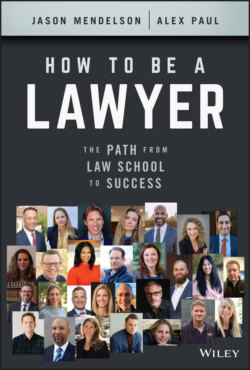Читать книгу How to Be a Lawyer - Jason Mendelson - Страница 39
Example B
ОглавлениеYou're a junior associate tasked with helping a senior partner on an acquisition. Your client is an internet security company looking to buy another firm in its industry. Your client was recently part of a majority purchase by a private equity firm. The private equity firm owns 55% of your client, the CEO owns 10%, and the remainder of the firm is owned by wealthy individuals and family offices with little expertise in the space.
The CEO and your senior partner are good friends, and the CEO is seeking to divest a substantial business line of the company to raise cash for this contemplated acquisition. Since your client just completed the private equity firm deal, you wonder if divesting a big part of the business is what the private equity owner would want the CEO to do. To make matters more interesting, the company the CEO wants to buy is also owned by the same private equity firm.
Perhaps you see the issues quickly, perhaps not. What you need is a framework to address and best manage the fiduciary issues before you give legal advice.
Our framework:
1 Who is the client?
2 Who is representing the client and/or giving guidance to you?
3 What conflicts of interest could this person have?
4 What conflicts of interest might you have?
Let's use our hypotheticals to work through the framework.
1 Who is the client?
In Example A, it's the juvenile. In Example B, it's the internet security company. That's obvious, but then you look to the next question.
1 Who is representing the client and/or giving guidance to you?
Unlike a simple situation where a person hires you to defend them in a lawsuit and they give you direction, these cases are a bit different. In Example A, the juvenile may not be able to give you any direction, so you are getting advice from both the local attorney and the professor. In Example B, the CEO is giving you direction. The senior partner is most likely giving you guidance as well. This leads to the next question.
1 What conflicts of interest could this person have?
In Example A there are potential conflicts with the professor trying to move work off her plate. Getting this case done leaves more resources for others. The local attorney could have a conflict depending on her relationship with the prosecutor.
In Example B, the CEO owns 10% of the company. They may or may not be aligned with the wishes of the majority owner, the private equity firm. If they are not, you have a problem. Even if they are, the private equity firm and CEO may not be aligned with the rest of the shareholders. This isn't a case where the majority of ownership is all that matters. It's what is best for your client—the company—that matters. If there was situation where the CEO and private equity firm wanted to do something in their best interests to the detriment of the rest of the shareholders, you have a real issue. Also, the senior partner and CEO are good friends, which can play into the conflict dynamics here. Okay, now let's look to the last part of the framework.
1 What conflicts of interest might you have?
In Example A, your potential conflicts are that you might want to get a job with the local attorney and, therefore, overweight the advice she gives you. You want to look good in front of her, so why not agree with her? Your other issue is that finals are right around the corner, and you need to turn your time and attention to exams. Lastly, the professor oversees your grade and why go against her advice?
Example B is the classic potential conflict of you trying to impress the senior partner and the CEO as the junior person while not paying attention to the actual client, the company. You get trapped thinking they are all one in the same. Sometimes they are. Sometimes they are not. The salient point is to recognize that you owe a fiduciary duty to the company, an abstract entity with numerous stakeholders (shareholders, officers, and employees). The CEO and PE firm speak for the company at times, but possibly against it at times, without ever letting you know there's a subtle switch. Be hypervigilant, and always consider whether there is a fiduciary duty in play.
